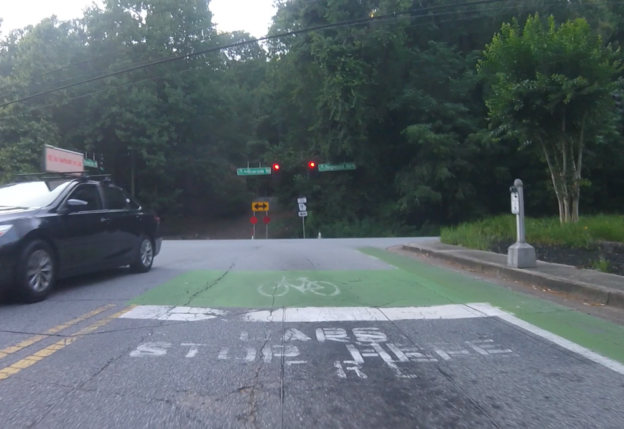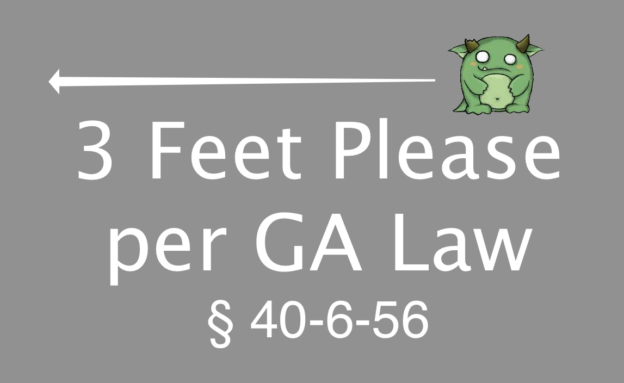Bikes and the safe operation of them on our roads is something that is incredibly important to me personally, but also to our world. The brutal truth is that while a car is not a requirement to live in most areas of the world, some form of distance transportation is. When it comes down to it, the bicycle is the most equitable and highest return on investment form of transportation available to us, regardless of where in the world we live. Most of the world grasps this, but in the highly ‘developed’ countries, where the car has supplanted the bicycle, the bicycle has been pushed off the roads, and into a cultural niche that becomes all about ‘sport’ or ‘fitness’ and no longer transportation, despite the statistical reality that the leading use of bicycles even in those countries is in fact transportation.
Yes, even in the United States, where a bicycle is seen as the domain of the lycra clad ‘Lance Armstrong Wannabe’ ‘taking up the road for sport’, the majority of bicycles and bike trips are still transportation. Our infrastructure, and cultural biases do not reflect that reality. So skewed is our perception that in the eyes of American Culture, the Full Size Truck with an average cost of more than $40,000 new is the symbol of the Working Class Man, but at $2,000 bicycle is the symbol of Bourgeois Excess, and the $500 bicycle is a Walmart Toy.
Because of this, our infrastructure has been shaped to our perception. Cars are given a greater right of access, if not legally, it is true in use and enforcement. It is so subtle and pervasive in perception that even in advocacy there is a tendency to push for ideas that defer to the car primacy at the sake of real road safety. Things like bike paths and bike lanes are wonderful, and just because they defer to cars does not mean we should not implement them. However, the implementation of them should not come at the cost of the bicycles right of use and more importantly right of way on the roads themselves, regardless of the additional infrastructure.
Why?
Well, there is a lot of meat in this, but rather then delve into that right away, let us take a step back and consider context. This morning a friend posted to a local cycling group a discussion of how cyclists can increase safety around cars on the road? Just the context of the question demonstrates the subtelty in how pervasive the cars primacy is. The presumption is that cars operate on the roads in such a dangerous manner, and with so little respect for cyclists on the roads that the onus shifts to the cyclists to protect themselves. Then you get into the discussion responses, and it becomes even clearer.
No Earbuds. Use lights, day and night. Use a mirror for rearview. Garmin Varia radar ( rearview, but technology ). Act like you are invisible. Ride in groups. Avoid busy roads. Ride at low traffic hours. Flashing Lights. High Vis Colors and Clothing. The common theme? Roads are for cars, cars are presumed to have the right of way, cars do not respect the right of way of bicycles.
That is the second class of comments in these discussions of course, those comments that directly address this. Ride defensively, be aware at all times. Take the lane. Do not ride on the white line. Ride in groups to force cars to respect the space. All are strategies to force a class of vehicle to honor the law, not the cultural perception of the law.
With a bit of context from within the cycling world, it is easy to see the appeal of bike lanes and paths, because they are effective at making people feel safer and creating seperation. Of course, out of sight, out of mind also applies. When you live in advocacy, you learn about the idea of conflict points, and the sheer volume of crashes that occur when cars do not have to think about bikes, and then turn across their paths, through these lanes and paths because they never even consider that a bike might be in them. There are other factors, like on street bike lanes creating a perception of a wider travel lane which translates to higher ambient travel speeds ( regardless of posted limits ), high costs of implementation, poor maintenance, etc.
What Has to Change?
For the most part, the laws are on the books in many states. Georgia’s bicycle laws really do not need massive revisions, as they already grant the majority of what is needed. Perhaps higher penalties for failure to honor them and perhaps remove the entire Far Right As Practicable, since it creates more confusion than it provides in clarity. What does not exist today is, consistant enforcement, driver awareness, and a culture that accepts and respects bikes on the roads. These things are intricately tied together.
The common answer to this is ‘education’, which, while accurate, is also borderline useless. Generally, education is an easy answer. Slap it in drivers training manuals, add it to drivers education curriculum, ask a few questions about it in the drivers exams and call it a day. This only impacts new drivers, and without reenforcement and enforcement, the cultural perceptions will override that education within years, often, just months. Just consider the number of people that struggle with the use of a round about. So, that answer is simply not enough.
What has to change is engagement. Cyclists have to come out of the closet and assert themselves. We need to be reactive when things go wrong. We need to be proactive before they do. We have to engage that family member that we normally avoid the discussion with because they are convinced that roads are for cars. We have to pester our civic leaders, city, county, state, federal to change the habits of enforcement. We have to push those leaders to get the law enforcement agencies on the same page as the law, and to enforce the law consistently. We have unify behind a single message that we belong on the roads, we have a right to the roads, and we expect that right to be enforced.
And when we get pushback, we have to back our fellow riders in the public forum.
In Summary
If there is to be change, it has to start with the cyclists. It has to be all of the cyclists, and even though the typical sport cyclist may not grasp the nuances of the transportation cyclist, the sport cyclists have the money, time, contacts and influences to spark and push real change to the betterment of ALL cyclists.
As someone who has spent 20 years advocating for bikes, the messaging has been too fragmented, and spread too thin across not enough engaged people. I ride in an area where we have over 2000 active, recreational cyclists that ride in groups rides within a 40 mile radius. Out of those, less than 20 are consistently engaged with thier communities, civic leaders and even in public non-cycling forums regarding cyclists rights. Less than 1%.
If you read to here, then did you notice the game played? Consistantly is inconsistently spelled throughout, just because I can, oh, and that I cannot spell 🙂

